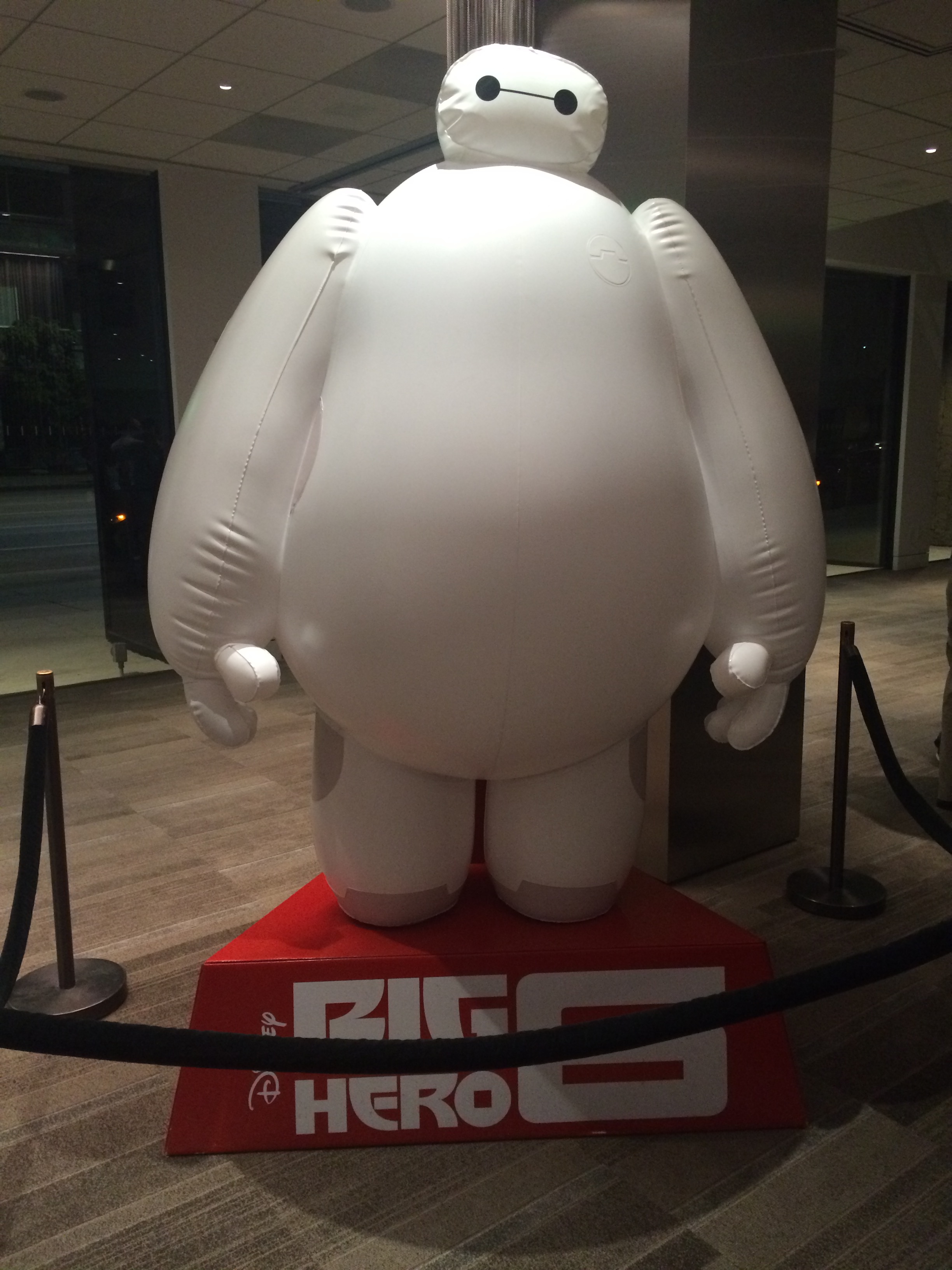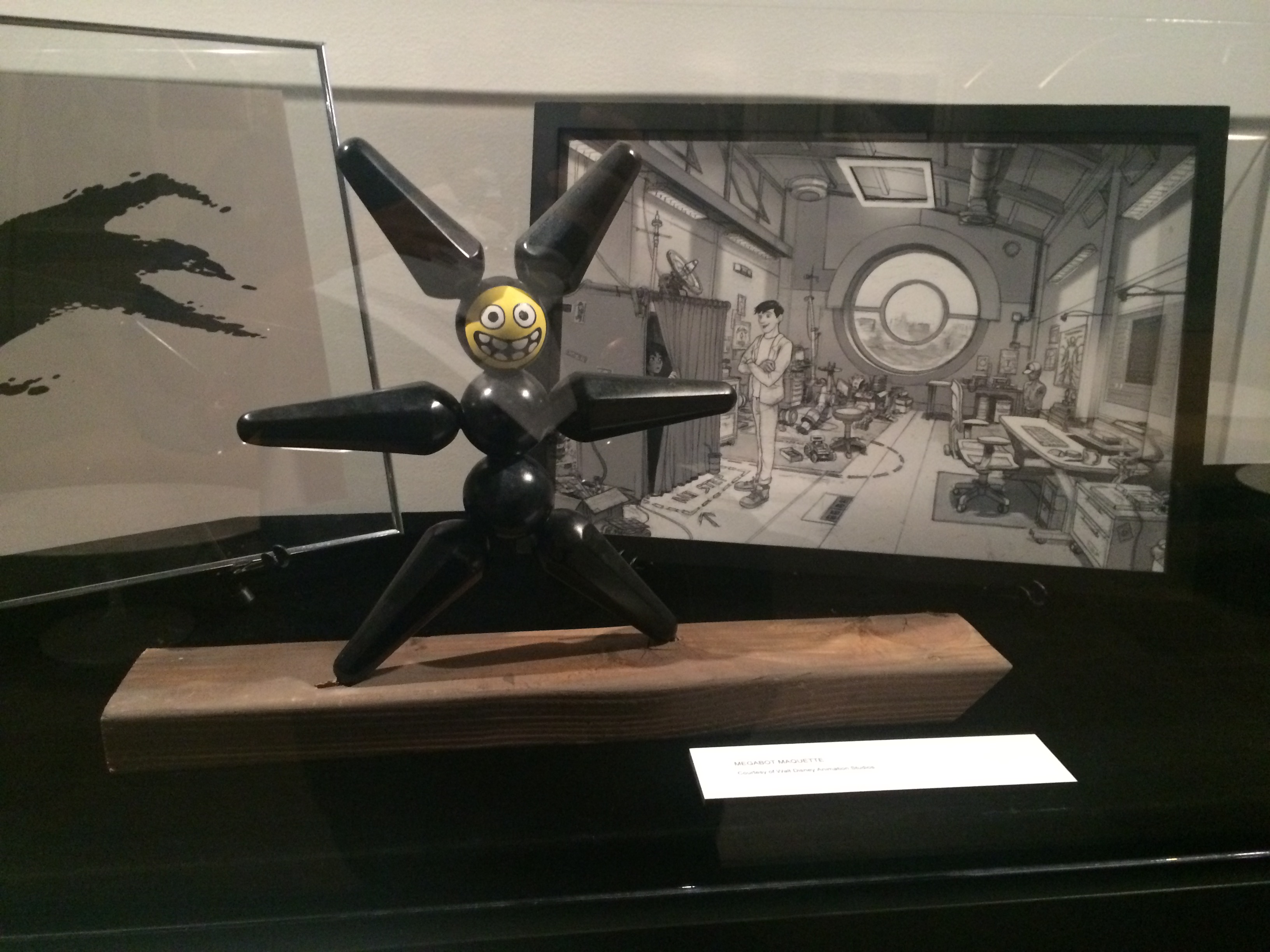The Academy Deconstructs Big Hero 6
Members of The Academy of Motion Pictures Arts and Sciences and the public gathered at the Samuel Goldwyn Theater in Beverly Hills for the 3rd 'Deconstructing' show. This time, the focus was on 'Big Hero 6.' 'Life of Pi' was the first in 2013, and 'Gravity' was deconstructed in 2014.
'Big Hero 6,' as you may recall, won the Best Animated Feature Oscar in February. This was the second consecutive win for Walt Disney Animation Studios, having previously won in 2014 for that little 'Frozen' movie. The Oscar was even on display in the lobby, and it was great to see it and other props from the making of the film.
As the evening began, we were asked to not take photos and/or video during the presentation, so I happily obliged. We were welcomed by Academy President Cheryl Boone Issacs, who then introduced our host for the evening Bill Kroyer. Kroyer serves as an Academy Governor in the field of animation.
So where did the idea for 'Big Hero 6' come about? Well, it all started when 'Big Hero 6 ' director Don Hall was 7 years old. He loved the Marvel comics growing up. So while working on 'Winnie the Pooh,' he asked John Lasseter if he could explore the Marvel world for his next film. So he searched through the comics and found 'Big Hero 6.' He had never heard of it before but liked the title and Japanese influence. Hall pitched the idea of 'Big Hero 6,' and Lasseter obliged. It also helped that Disney had acquired Marvel so getting the rights wouldn't be difficult.
The best thing that Hall did was make it his own. Hall, along with co-director Chris Williams and producer Roy Conli, traveled to Tokyo and spent 13 days exploring every part of the city. They wanted San Fransokyo to be as unique as possible. There are details in the film that you may not notice like the stacked milk bottle boxes and other trash in an alley. And since Lasseter knows the San Francisco skyline very well, they wanted to create the fog and clouds just right.
When it came time to create Baymax, they wanted a cuddly look. So with the help of a visit to Carnegie Mellon University, the inspiration for Baymax was found. The robotics department had created a vinyl-covered soft robotics arm, and Hall knew that he had the right look for Baymax right then and there. The arm was on display in the lobby after the panel, and it was great to see it.
Director Chris Williams then talked about the development of the story. There were many story meetings, and the most difficult part of these meetings was accepting criticism and praise. He said the biggest challenge was dealing with the character Hiro. How do you give a 14 year old genius a balance of vulnerability and pride? It wasn't easy, but once it was accomplished, the rest of the process was made easier.
Williams also mentioned that the scene where we are first introduced to Baymax had to be redone after it was fully animated. The scene didn't flow right since Baymax was going to be introduced at a trade show. It was then turned into a more intimate moment between Baymax, Tadashi and Hiro.
A lot was mentioned during the disccusion about Disney's Hyperion rendering system. This is a brand new program, which is considered a breakthrough in stimulating complex and realistic lighting in computer animation. It allowed "digital scouting" of an imaginary city with 83,000 buildings, 250,000 trees, hundreds of thousands of street lamps, and more than 100,000 vehicles. The filmmakers also used another popular program known as Denizen. This software allowed the filmmakers to populate the story with more than half a million distinct people, including 6,000 that were feature in the opening scene alone.
Another program used was Maya. Zach Parrish, head of animation for 'Big Hero 6,' showed us a wonderful demonstration of this program. It helped bring the characters and scenery to life from pre-production to film completion. Maya helped articulate the largest cast of main characters for a Disney film - 14 - while Denizen helped build 700 unique characters for the film, and over 1,300 animation cycles. Denizen also helped create the different walking styles of each character. Baymax's walk, for example, was inspired by the walk of a baby penguin.
Kyle Odermattwas the visual effects supervisor for the film. His challenge for the movie was the setting of San Fransokyo. Of course, with help from Hyperion and Denizen, that process was made easier. Thanks to new technology, they were able to generate distinct buildings without having to hard code each one separately. The atmosphere was important as well, especially capturing the look of fog coming into the city. Denizen also helped create the different character styles, shapes, and clothing. Disney employees even created their own caricatures that can be seen in various points in the movie.
Adolph Lusinsky was the last person to share. He was the director of cinematography for the movie. He went into great detail on how lighting became an important part of the film. Once again, new technology breakthroughs allowed them to simulate the complex bouncing of light off and through objects. This was made possible again through Hyperion. The cinematography of the film required a lot of natural lighting. This was studied very extensively, and it allowed the film to have a very natural look.
At the end of the discussion, all filmmakers noted that their experience was a special one. Being able to create something unique by using new technological breakthroughs helped the film become one that touched the hearts of all involved, and everyone who saw the film.
Following the discussion, storyboard displays, along with the special vinyl-covered soft robotics arm, and more were on display in the lobby. It was great to see this, and really learned a lot about the filmmaking process.






